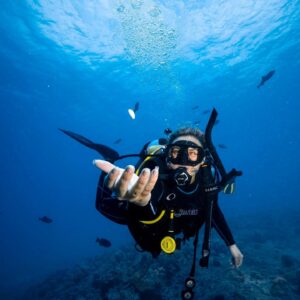Immerse yourself in the vibrant underwater world of Hawaii’s rich marine life with an unforgettable scuba diving adventure. Discover the enchanting beauty that lies beneath the sparkling turquoise waters as you dive into a realm teeming with colorful coral gardens, exotic fish, and majestic sea creatures. Whether you are a seasoned diver or a beginner, Hawaii offers an array of dive sites suited for all skill levels, each promising a unique and awe-inspiring encounter with the fascinating marine ecosystem. Embark on an exploration like no other, where every dive is an invitation to witness the wonders of the ocean firsthand. Let the magic of Hawaii’s marine life captivate you as you dive into memories that will last a lifetime.
1. Choosing the Right Scuba Dive Location in Hawaii
1.1. Researching Dive Sites
When it comes to choosing the right scuba dive location in Hawaii, it’s important to do your research. Hawaii is home to a wide variety of dive sites, each offering its own unique features and marine life. Take the time to read about different dive sites and their characteristics. Look for sites that match your preferences, whether you’re looking for vibrant coral reefs, encounters with large marine animals, or a combination of both. By researching dive sites beforehand, you can ensure that you choose a location that meets your expectations and maximizes your chances of encountering the marine life you’re interested in.
1.2. Considering Skill Level and Experience
When choosing a scuba dive location in Hawaii, it’s crucial to consider your skill level and experience. Some dive sites may be more suitable for beginners, while others may require more advanced diving skills. Take an honest assessment of your abilities and choose a dive site that aligns with your proficiency level. If you’re a beginner, look for sites that offer calm conditions, easy access, and shallow depths. On the other hand, if you’re an experienced diver, you may be more interested in sites that provide more challenging conditions and opportunities for exploration. By considering your skill level and experience, you can ensure a safe and enjoyable diving experience in Hawaii.
1.3. Consulting with Local Dive Shops
One of the best ways to choose the right scuba dive location in Hawaii is by consulting with local dive shops. These experts have firsthand knowledge of the different dive sites in the area and can provide valuable insights and recommendations. Local dive shops can offer information about current conditions, visibility, and marine life sightings. They can also help you assess your skill level and suggest suitable dive sites based on your interests and experience. Consulting with local dive shops not only enhances your dive planning process but also allows you to support the local diving community and gain access to their expertise and resources.
2. Understanding the Marine Life in Hawaii
2.1. Species Diversity and Endemic Species
Hawaii’s marine life is incredibly diverse, with a wide array of species inhabiting its waters. The islands are known for their numerous endemic species, which are found nowhere else on Earth. From colorful reef fish to majestic sea turtles, exploring Hawaii’s marine life offers a chance to encounter unique and fascinating creatures. By understanding the importance of endemic species and the role they play in maintaining the delicate ecological balance of Hawaii’s marine ecosystems, you can deepen your appreciation for the underwater world and contribute to its preservation.
2.2. Coral Reefs and Tropical Fish
Coral reefs are a highlight of Hawaii’s underwater landscapes, and they support a vast array of tropical fish species. These vibrant underwater ecosystems offer a stunning display of colors and shapes, providing a remarkable backdrop for scuba diving. As you explore Hawaii’s coral reefs, you’ll have the opportunity to observe fish species such as parrotfish, butterflyfish, angelfish, and many more. The vivid colors and intricate patterns of these fish are a sight to behold, and they add an extra level of beauty to your scuba diving experience.
2.3. Manta Rays and Whale Sharks
If encountering large marine animals is your goal, Hawaii won’t disappoint. Manta rays and whale sharks are among the most sought-after underwater species in the islands. Manta rays, known for their graceful movements and large wingspans, can often be seen gliding through the water near certain dive sites. Swimming alongside these gentle giants is an awe-inspiring experience that will leave a lasting impression. Similarly, if you’re lucky, you may have the chance to encounter whale sharks during certain times of the year. These colossal creatures, known as the giants of the ocean, can captivate divers with their massive size and gentle nature. Exploring Hawaii’s waters opens up the possibility of encountering these magnificent creatures up close.
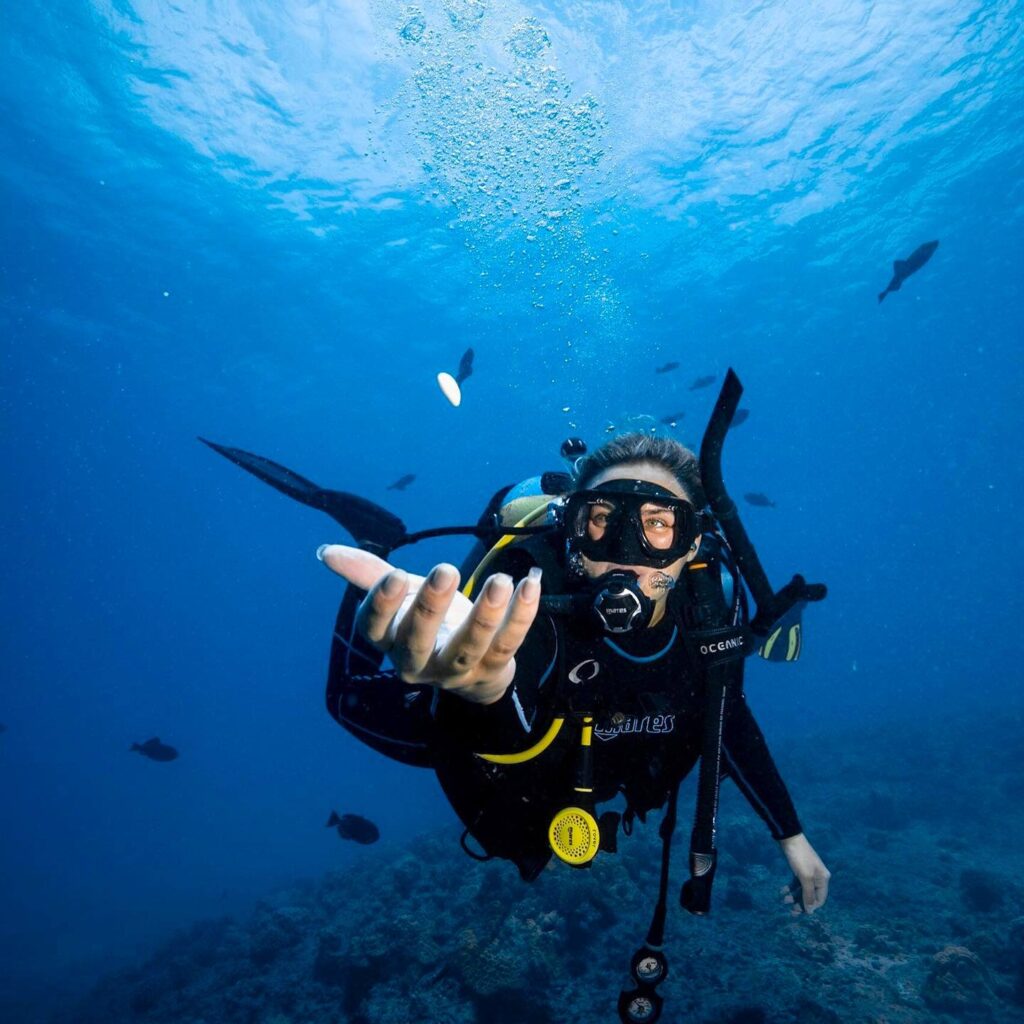
Explore Uncharted Hawaiian Destinations
3. Preparing for a Scuba Dive in Hawaii
3.1. Getting Certified or Refreshing Skills
Before embarking on a scuba diving adventure in Hawaii, it’s essential to ensure that you have the necessary certifications and skills. If you’re not yet a certified diver, consider enrolling in a scuba diving certification course. These courses provide the knowledge and skills required to dive safely and confidently. If you’re already certified but haven’t dived in a while, it’s a good idea to refresh your skills through a refresher course. Refreshing your skills will help you regain confidence and ensure that you’re prepared for the unique conditions of diving in Hawaii.
3.2. Choosing the Right Dive Operator
Selecting the right dive operator is crucial to having a successful and enjoyable scuba diving experience in Hawaii. Look for dive operators that have a good reputation, positive reviews, and a focus on safety. A reputable dive operator will prioritize your safety and well-being, providing well-maintained equipment, experienced instructors, and following proper diving protocols. Additionally, choose a dive operator that offers a range of dive sites and experiences to cater to different interests and skill levels. By choosing the right dive operator, you can trust that you’ll be in capable hands and have an unforgettable diving adventure.
3.3. Packing Essential Gear
When preparing for a scuba dive in Hawaii, it’s important to pack the essential gear. While some equipment can be rented or provided by dive operators, there are certain items you should have for your own comfort and convenience. These include a well-fitting wetsuit or dive skin, mask, snorkel, fins, and a dive computer or depth gauge. It’s also advisable to bring a dive light, surface signaling devices (such as a whistle or surface marker buoy), and a reef-safe sunscreen. Having the right gear ensures that you can fully enjoy your dive and stay safe underwater.
3.4. Checking Weather and Tide Conditions
Before heading out for a scuba dive in Hawaii, it’s crucial to check the weather and tide conditions. Weather conditions can significantly impact dive site visibility, currents, and overall safety. Pay attention to weather forecasts and avoid diving if conditions are unfavorable, such as during storms or strong winds. Similarly, understanding the tidal patterns is important, as certain dive sites may be more accessible or enjoyable during specific tide stages. Planning your dives around favorable weather and tide conditions will maximize your chances of having a safe and enjoyable experience.
4. Safety Guidelines and Best Practices
4.1. Buddy System and Dive Planning
One of the fundamental safety guidelines in scuba diving is to always dive with a buddy. The buddy system ensures that there is someone to assist you in case of an emergency and provides an additional layer of safety. Before each dive, it’s essential to plan your dive with your buddy. Discuss the dive objectives, routes, and signals to use underwater. Establishing clear communication and understanding each other’s capabilities and limitations is crucial for a safe and enjoyable dive.
4.2. Equalization Techniques
Equalizing your ears is a vital skill to master when scuba diving. As you descend, the increasing pressure can cause discomfort or even injury to your ear drums if not properly equalized. Learn and practice different equalization techniques, such as the Valsalva maneuver or the Frenzel maneuver, to ensure a comfortable descent. Proper equalization not only prevents discomfort but also reduces the risk of more serious injuries, such as barotrauma.
4.3. Buoyancy Control and Preventing Damage to Reefs
Maintaining proper buoyancy control is essential for protecting both yourself and the fragile reef ecosystems. Avoid touching or standing on the reef, as even a slight touch can cause irreversible damage. Practice buoyancy control techniques, such as proper weighting and fin techniques, to minimize your impact on the underwater environment. By diving with good buoyancy control, you can minimize the risk of damaging the delicate corals and other reef organisms.
4.4. Monitoring Air Supply and Decompression
Monitoring your air supply and adhering to safe diving limits are vital for your safety underwater. Regularly check your air pressure gauge and plan your dive to ensure you have enough air to ascend safely. Additionally, it’s important to understand and follow decompression guidelines, especially if you’re planning dives with longer bottom times or multiple dives in a day. Properly managing your air supply and decompression stops reduces the risk of decompression sickness and ensures a safe return to the surface.
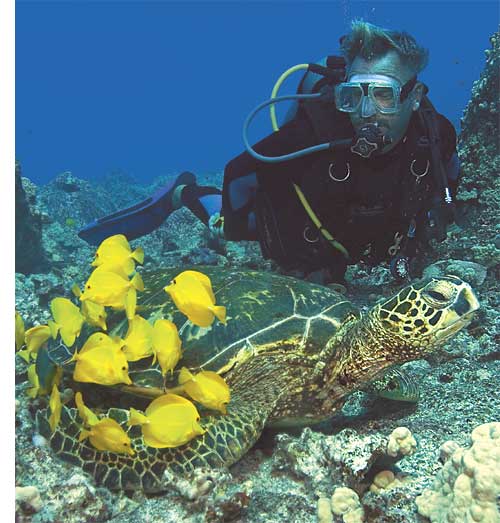
Plan Your Dream Hawaiian Getaway
5. Popular Dive Sites in Hawaii
5.1. Hanauma Bay
Hanauma Bay, located on the island of Oahu, is a renowned dive site known for its abundant marine life and clear waters. With its crescent-shaped bay and vibrant coral reefs, Hanauma Bay offers an excellent opportunity to explore Hawaii’s diverse underwater world. Snorkelers and scuba divers alike can enjoy encounters with colorful reef fish, sea turtles, and occasional sightings of manta rays and dolphins. However, it’s important to note that due to its popularity, Hanauma Bay has a daily visitor limit, and reservations are required to ensure the protection of the fragile ecosystem.
5.2. Molokini Crater
Situated off the coast of Maui, Molokini Crater is a partially submerged volcanic crater that offers exceptional dive experiences. The crescent-shaped crater is a marine reserve and home to an array of marine species. Diving in Molokini Crater provides an opportunity to explore steep drop-offs, coral gardens, and unique rock formations. The crystal-clear waters offer excellent visibility and the chance to encounter tropical fish, sharks, and even humpback whales during the winter months. Molokini Crater is a must-visit dive site for those seeking an unforgettable underwater adventure.
5.3. Kona Coast
The Kona Coast on the Big Island of Hawaii is renowned for its exceptional diving opportunities. The coast is known for its lava formations, unique underwater topography, and resident population of manta rays. Night diving with manta rays is a popular activity in Kona, where divers can witness these graceful creatures as they feed on plankton attracted by dive lights. The Kona Coast also offers a variety of dive sites suitable for all skill levels, with vibrant coral reefs, sea caves, and the chance to spot other marine creatures like sea turtles and dolphins.
5.4. Lanai
Lanai, an island located near Maui, is a hidden gem for scuba diving in Hawaii. Known for its pristine waters and untouched reefs, Lanai offers a peaceful and serene diving experience. The island is surrounded by vibrant coral gardens, steep drop-offs, and unique rock formations, providing diverse habitats for a wide variety of marine life. One of the highlights of diving in Lanai is the opportunity to spot spinner dolphins, which often frequent the waters around the island. With its tranquil atmosphere and abundant marine life, Lanai is a destination that should not be missed by avid scuba divers.
6. Special Dive Experiences in Hawaii
6.1. Night Diving with Manta Rays
Night diving with manta rays is a truly magical experience unique to Hawaii. As the sun sets and darkness falls, manta rays emerge to feed on plankton attracted by dive lights. Participating in a night dive with manta rays allows you to witness their graceful movements and even interact with them up close. Dive operators in Hawaii offer guided night dives with manta rays, providing an opportunity to observe these gentle giants in their natural habitat. It’s important to follow the guidelines provided by the dive operators to ensure a safe and responsible encounter with these fascinating creatures.
6.2. Dive Safaris and Liveaboards
For those seeking a more immersive and adventurous dive experience, dive safaris and liveaboards in Hawaii offer unparalleled opportunities. Dive safaris involve exploring multiple dive sites over a few days, allowing you to fully immerse yourself in Hawaii’s underwater world. Liveaboards take the experience a step further by providing accommodation on a boat, ensuring that you’re always near the best dive sites. These extended dive trips give you the chance to explore remote locations, access areas inaccessible to day trips, and maximize your time underwater. Dive safaris and liveaboards are ideal for avid divers looking to fully explore the diverse marine environments of Hawaii.
6.3. Snorkeling with Dolphins
If scuba diving isn’t your preferred activity, snorkeling with dolphins is an incredible alternative to experience the abundant marine life of Hawaii. Numerous locations around the islands offer the opportunity to encounter dolphins in their natural habitat. Snorkel alongside these playful creatures as they swim and leap through the crystal-clear waters. It’s crucial to approach dolphins with respect and caution, maintaining a safe distance to avoid disturbing their natural behavior. Snorkeling with dolphins provides a memorable and enchanting experience that showcases the beauty and wonder of Hawaii’s oceanic playground.
6.4. Exploring Underwater Volcanoes
Hawaii is known for its volcanic activity, and exploring underwater volcanoes is a unique and thrilling diving experience. One such popular site is the Kilauea volcano on the Big Island, where lava tubes and black sand beaches offer an otherworldly underwater landscape. Diving near volcanic formations allows you to witness the mesmerizing beauty of underwater lava formations and the unique marine life that thrives in these environments. Exploring underwater volcanoes provides divers with a glimpse into the powerful forces that have shaped the Hawaiian islands and the opportunity to witness nature’s extraordinary processes firsthand.
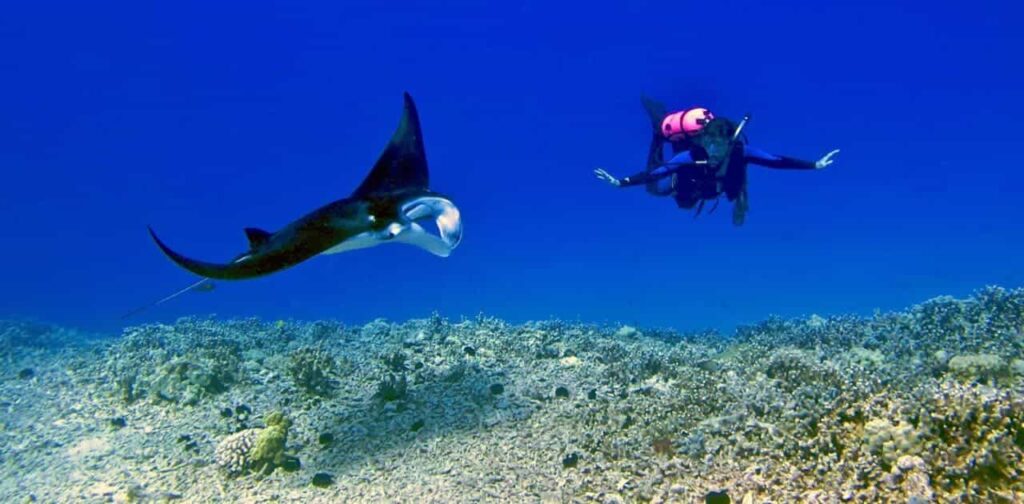
Experience Hawaii’s Unique Attractions
7. Conservation and Responsible Diving
7.1. Coral Reef Protection and Conservation
Coral reefs are delicate and vulnerable ecosystems that require protection and conservation efforts. When diving in Hawaii, it’s important to follow responsible diving practices to minimize the impact on these fragile habitats. Avoid touching or collecting coral, as they are living organisms essential to the survival of countless marine species. Ensure that your equipment, such as fins and gauges, does not come into contact with the reef. Participating in coral reef conservation initiatives and supporting organizations that work towards reef preservation can also make a positive impact on Hawaii’s marine ecosystems.
7.2. Avoiding Touching or Disturbing Marine Life
Responsible diving involves respecting marine life and their natural habitats. It’s crucial to avoid touching or disturbing marine creatures, even if they appear friendly or curious. Maintain a safe distance and observe marine life from a respectful standpoint, being careful not to enter their personal space. Avoid feeding marine animals, as this can disrupt their natural feeding behaviors and create dependency on human interaction. By practicing responsible diving, you contribute to the preservation of Hawaii’s marine life and help maintain their natural behaviors.
7.3. Proper Waste Disposal and Eco-friendly Practices
When enjoying Hawaii’s underwater wonders, it’s important to practice proper waste disposal and adopt eco-friendly practices. Do not litter or discard any trash or debris into the ocean. Dispose of waste responsibly in designated trash receptacles on land. Avoid using single-use plastics and opt for reusable or biodegradable alternatives whenever possible. Respect the marine environment by taking care not to damage or remove any living or non-living components. By minimizing your ecological footprint and practicing eco-friendly habits, you contribute to the long-term conservation of Hawaii’s marine ecosystems.
7.4. Participating in Citizen Science Projects
Citizen science projects are a valuable way to contribute to marine conservation efforts while scuba diving in Hawaii. Numerous organizations and research institutions offer opportunities for divers to participate in data collection and research projects. These projects may involve tasks such as monitoring fish populations, tracking coral health, or documenting marine species sightings. By participating in citizen science initiatives, you actively contribute to the scientific understanding of Hawaii’s marine ecosystems and assist in decision-making processes that aim to protect and preserve these valuable habitats.
8. Photography and Capturing Marine Life
8.1. Choosing the Right Equipment
Capturing the beauty of Hawaii’s marine life through photography is a popular pursuit for many divers. When it comes to underwater photography, choosing the right equipment is essential. Invest in a reliable underwater camera or an underwater housing for your existing camera. Consider the camera’s image quality, underwater housing durability, and ease of use. Additionally, accessories such as strobes or underwater lighting can greatly enhance the colors and details in your photographs. Research different camera models and consult with experienced underwater photographers to ensure you select the equipment that best suits your needs and budget.
8.2. Underwater Photography Techniques
Underwater photography requires specific techniques to capture stunning images. Mastering buoyancy control is crucial, as it allows you to position yourself and your camera effectively. Practice steady movements and avoid stirring up sediment, which can ruin visibility and affect image quality. Experiment with different angles, perspectives, and lighting conditions to showcase the unique features of each subject. Taking the time to understand the behavior and movement patterns of marine creatures can greatly improve your chances of capturing their best moments. Continuously learn and experiment with different photography techniques to enhance your underwater images.
8.3. Respecting Marine Life during Photography
While photography allows us to document and appreciate marine life, it’s important to prioritize the well-being and safety of the subjects we capture. Avoid touching or disturbing marine creatures for the sake of a photograph. Respect their personal space and natural behavior. Using the zoom function rather than approaching marine life too closely will minimize stress on the animals and preserve their natural environment. Additionally, be cautious not to damage or disturb coral reefs or other underwater habitats while trying to capture the perfect shot. By following these guidelines, you can capture incredible images while exhibiting responsible and ethical behavior towards the marine life you encounter.
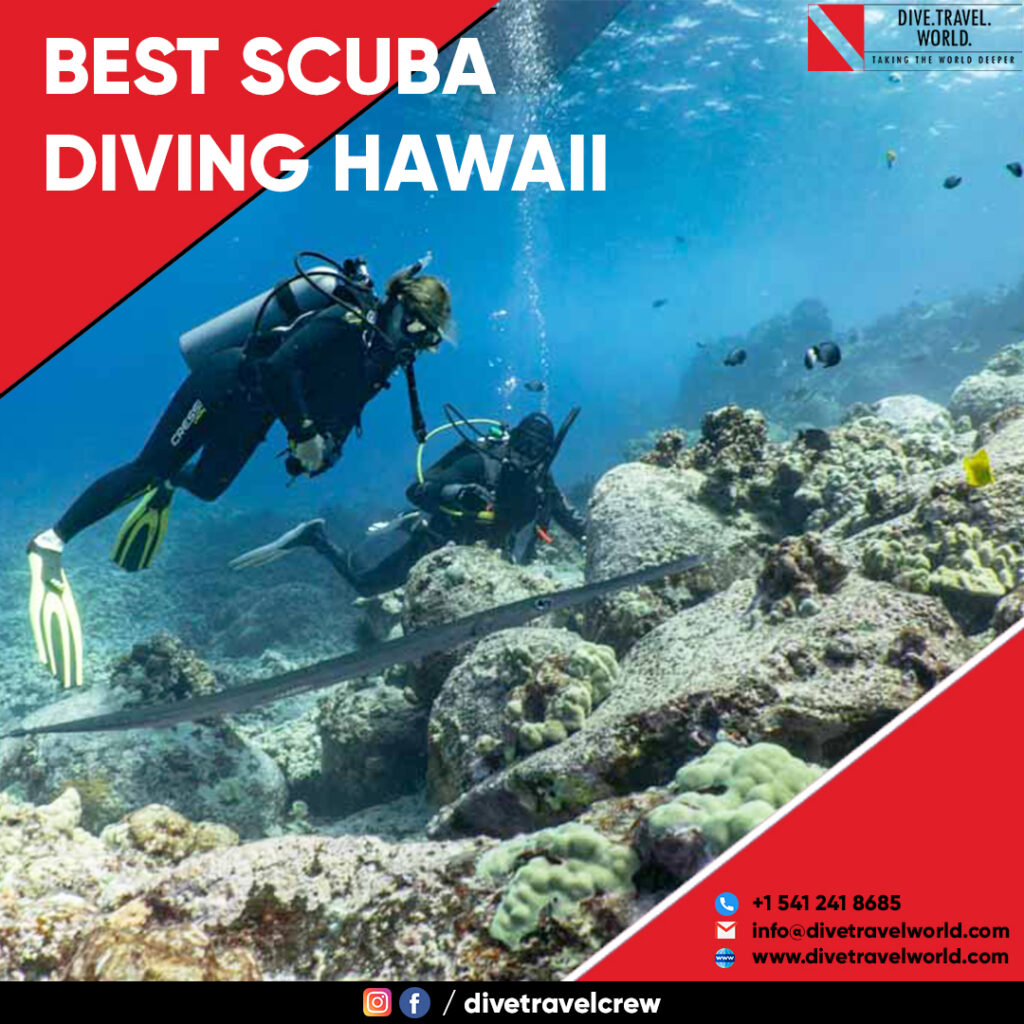
9. Dive Training and Certification in Hawaii
9.1. PADI and Other Certification Agencies
PADI (Professional Association of Diving Instructors) is one of the most recognized scuba diving certification agencies worldwide. PADI offers a range of courses for divers of all skill levels, from beginner to advanced. Its certifications are widely accepted and provide divers with the skills and knowledge necessary to dive safely. Other reputable certification agencies include SSI (Scuba Schools International) and NAUI (National Association of Underwater Instructors). When seeking dive training and certification in Hawaii, consider selecting a dive school or instructor affiliated with these respected organizations.
9.2. Local Dive Schools and Instructors
Hawaii is home to numerous dive schools and instructors who are dedicated to providing quality dive training. Research and choose a local dive school or instructor that aligns with your learning preferences and goals. Look for instructors who prioritize safety, have a good reputation, and provide comprehensive training programs. Consider factors such as class size, instructor-student ratio, and the availability of pool or confined water training facilities. By selecting a reputable and well-established dive school, you can ensure that you receive proper training and guidance to become a confident and responsible diver.
9.3. Advanced Dive Courses and Specialties
After obtaining your initial scuba diving certification, you may choose to pursue advanced dive courses and specialties. Advanced courses provide divers with the opportunity to enhance their skills, broaden their knowledge, and explore different aspects of scuba diving. Hawaii offers a variety of advanced dive courses and specialties, ranging from underwater navigation to wreck diving and underwater photography. These courses not only broaden your understanding of specific dive techniques but also open up new avenues for exploration and enjoyment. Consider your interests and aspirations as a diver to select advanced courses and specialties that align with your goals.
10. Regulations and Permits for Scuba Diving in Hawaii
10.1. State and Marine Protected Areas Regulations
When planning a scuba dive in Hawaii, it’s vital to familiarize yourself with the state and marine protected areas regulations. Hawaii’s state regulations may include guidelines on marine life interaction, fishing restrictions, and boating safety. Marine protected areas, such as marine reserves or sanctuaries, often have specific rules and restrictions to preserve their unique ecosystems. Be aware of any permits, licenses, or entry requirements for certain dive sites or protected areas. By adhering to these regulations, you ensure that you’re diving responsibly and contributing to the conservation efforts in Hawaii.
10.2. Permits and Fees
Some dive sites in Hawaii may require permits or require the payment of fees. These permits help manage the number of visitors to sensitive areas and contribute to conservation efforts. For example, Hanauma Bay on Oahu requires a reservation and an entrance fee to protect the fragile coral reef ecosystem. Molokini Crater also has a park entrance fee to support its conservation and maintenance efforts. Check with local authorities or dive operators to ensure you have the necessary permits and have paid any applicable fees before diving in specific locations.
10.3. Fishing and Spearfishing Restrictions
Hawaii has regulations in place to protect marine resources, including fishing and spearfishing restrictions. Certain locations may have designated no-fishing zones or seasonal fishing closures to allow fish populations to replenish. Be aware of these restrictions and ensure that you comply with all fishing regulations. If you’re a spearfisher, make sure to familiarize yourself with the specific rules and regulations governing spearfishing in Hawaii. Respect these restrictions to maintain the delicate balance of Hawaii’s marine ecosystems and ensure sustainable fishing practices.
10.4. Wildlife Interaction Guidelines
Interacting with marine wildlife is a privilege that comes with responsibility. Hawaii has specific guidelines in place to ensure safe and respectful wildlife interactions. For example, it is illegal to touch, feed, or harass sea turtles in Hawaii. Similarly, boat operators and divers must maintain a safe distance from whales to prevent disturbance. Familiarize yourself with these guidelines to ensure that you’re interacting with marine wildlife in a responsible manner. By following these guidelines, you protect both the animals and yourself, allowing for memorable and ethical encounters with Hawaii’s marine life.
